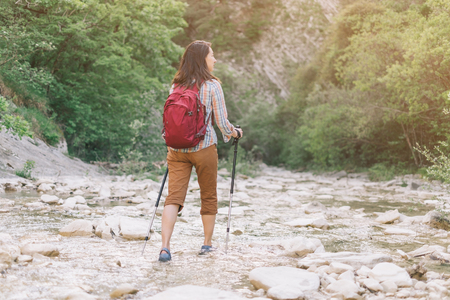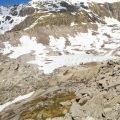Introduction to Water Filtration on American Trails
When you’re pounding out miles on the Appalachian Trail or bushwhacking through the Rockies, one thing stands between you and a ruined trip: safe drinking water. For hikers and backpackers in the United States, clean hydration isn’t just a comfort—it’s a survival essential. American wilderness areas are loaded with water sources, from high mountain streams and crystal-clear alpine lakes to muddy backcountry ponds. But don’t let appearances fool you. Even the most pristine-looking creek could harbor invisible threats like giardia, cryptosporidium, or E. coli. Every year, unfiltered trail water sends hikers home early—sometimes straight to the ER. That’s why having the right water filtration system is as important as your boots or pack. Whether you’re out for a weekend in Shenandoah or thru-hiking the Pacific Crest Trail, understanding which water sources are available—and how to make them safe—should be at the top of your trail prep checklist.
2. Affordable Water Filtration Systems
For hikers and backpackers who want to keep their gear budget in check, affordable water filtration systems offer a solid line of defense against questionable trail water sources. Let’s break down the most popular wallet-friendly options, commonly trusted by U.S. outdoor enthusiasts, and see where they shine and where they might fall short.
Popular Budget Filtration Options
| Brand & Model | Type | Approx. Cost (USD) | Main Features |
|---|---|---|---|
| Sawyer MINI | Squeeze Filter | $20-25 | Ultralight, attaches to bottles/pouches, filters up to 100,000 gallons |
| Lifestraw Personal | Straight Straw Filter | $15-20 | Drink directly from source, filters up to 4,000 liters, no moving parts |
| KATADYN BeFree 0.6L | Squeeze Bottle Filter | $35-40 | Fast flow rate, integrated soft flask, easy cleaning |
| Aquamira Water Treatment Drops | Chemical Drops | $15-20 (treats 30 gallons) | No filter clogging, ultralight, effective against viruses/bacteria/protozoa |
Pros of Budget Filtration Systems
- Cost-Effective: Most options are under $40—easy on the wallet for beginners or group trips.
- Lightweight & Compact: Minimalist designs fit easily into any pack or pocket.
- User-Friendly: Most require little setup; squeeze or sip and go.
- Reliable Against Bacteria/Protozoa: Well-suited for U.S. streams and lakes where viruses are less common.
Cons of Budget Filtration Systems
- Limited Virus Protection: Most budget filters don’t remove viruses—use chemical drops if this is a concern.
- Tough on Sediment-Heavy Water: Small pore sizes can clog quickly in silty water sources; regular backflushing needed.
- Lower Durability: Some models have fragile components that can crack or fail under rough use or freezing conditions.
- Flow Rate Variability: Some straw/squeeze models may slow down after repeated use if not cleaned properly.
Best Scenarios for Affordable Filters
- Weekend Hikes & Overnighters: Perfect for trails with known water sources and moderate water needs.
- Solo Treks or Daypacks: Lightweight builds make them ideal for fast-and-light travel.
- Backup or Emergency Use: Cheap enough to stash as a backup in your glove box or bug-out bag.
- Youth & Scout Groups: Simple operation means fewer training headaches and more self-reliance for young adventurers.
Tough Talk: When to Avoid Going Cheap
If you’re heading overseas, into high-risk contamination zones (think livestock-heavy areas), or prepping for long expeditions where filter failure isn’t an option, budget systems might leave you exposed. In those scenarios, consider investing in a premium system or pairing your filter with chemical treatments for full-spectrum protection. But for most American trails and weekend warriors? A well-chosen affordable filter gets the job done without breaking the bank.
![]()
3. Premium Water Filtration Systems
When it comes to high-end water filtration systems, American hikers with experience on the trail know that you get what you pay for. Premium filters aren’t just about brand names—they deliver cutting-edge technology, durability, and speed that can make a real difference when every drop counts. Top-tier models often feature multi-stage filtration, combining hollow fiber membranes, activated carbon, and even UV purification to tackle bacteria, protozoa, viruses, and chemical contaminants that cheaper models might miss. Advanced designs like pump-action or gravity-fed systems maximize flow rates, letting you fill up bottles in seconds instead of minutes—a big deal when you’re filtering for a group or racing against fading daylight. Many premium options are also built with rugged American backcountry in mind: think freeze-resistant components, field-cleanable cartridges, and compatibility with hydration reservoirs or wide-mouth Nalgene bottles. For serious hikers tackling remote trails or unpredictable environments, this extra reliability and efficiency aren’t just luxuries—they’re insurance against dehydration and illness. In short: if you want peace of mind and performance that keeps pace with your ambitions, investing in a premium water filter is a smart call for anyone who spends serious time off the grid.
4. Key Differences: Affordable vs. Premium Picks
Direct Comparison of Critical Factors
When it comes to choosing a water filtration system for the trail, understanding the differences between affordable and premium options is crucial. The stakes are high in the backcountry, where water safety, speed, and gear reliability can make or break your trip. Here’s a side-by-side breakdown of key factors that matter most on U.S. trails:
| Factor | Affordable Systems | Premium Systems |
|---|---|---|
| Filtration Level | Usually removes bacteria and protozoa; may not filter viruses or heavy metals. | Advanced filtration—often removes viruses, chemicals, and some heavy metals; some include UV purification. |
| Flow Rate | Slower (0.5-1L/min). Squeezing or gravity-fed models require patience, especially with cold or silty water. | Faster (up to 2L/min or more). Pump-action or pressurized systems deliver quick hydration for groups or solo hikers in a hurry. |
| Durability | Plastic housings and basic filters; susceptible to cracking if dropped or frozen. Lifespan: 200-1,000 liters. | Reinforced components, replaceable cartridges, freeze-resistant. Lifespan: up to 4,000+ liters with proper care. |
| Maintenance | Backflushing required often; clogging is common with turbid sources. Replacement filters are cheap but frequent. | Easier cleaning; self-cleaning features on some models. Fewer clogs, longer intervals between maintenance. |
Trail-Tested Scenarios: Real-Life Trade-Offs
Scenario 1: Appalachian Trail (AT) Section Hike—Budget Pick
You’re moving fast and light on the AT in Virginia. The Sawyer Mini gets the job done for clear streams but slows you down when filling from shallow seeps—expect to squeeze hard for every drop.
Scenario 2: Grand Canyon Backpacking—Premium Pick
Desert conditions mean silty Colorado River water. A Katadyn Hiker Pro zips through gallons for your group without clogging mid-trip, and its robust build shrugs off rough handling.
The Bottom Line: Affordable filters are solid for solo hikes on well-traveled trails with reliable water sources, while premium systems shine when you need versatility, speed, and ruggedness in unpredictable environments like the Rockies or desert canyons.
5. Cultural Insights and Trail-tested Advice
American outdoor culture is deeply rooted in self-reliance, safety consciousness, and respect for nature—a mindset that shapes how hikers and backpackers choose their water filtration systems. The mantra “better safe than sorry” drives many to invest in high-quality filters or carry backup purification methods, even on short trips. This culture is reinforced by organizations like the Boy Scouts of America and Leave No Trace Center for Outdoor Ethics, which emphasize preparedness and environmental stewardship.
Safety Drills: Practice Makes Perfect
Trail veterans know that gear is only as good as your ability to use it under pressure. American hikers routinely practice safety drills: assembling filters blindfolded, timing water treatment steps, and running mock “contaminated water” scenarios. This hands-on approach ensures that when you’re miles from help—whether in the Rockies or the Appalachian backcountry—you don’t freeze up or make costly mistakes.
Leave No Trace: Protecting Wild Waters
The American commitment to Leave No Trace principles isn’t just about picking up trash; it’s about minimizing your impact on precious water sources. This means always filtering or treating water away from streams, never washing directly in lakes or creeks, and choosing systems that don’t leak chemicals or microplastics into the environment. Affordable squeeze filters are popular because they’re lightweight and easy to clean in the field, but responsible hikers pack out used filter cartridges rather than leaving them behind.
Regional Risks: Giardia, Wildfires, and Beyond
Understanding local threats is second nature for experienced U.S. adventurers. In the Pacific Northwest, Giardia (“beaver fever”) is notorious—one slip-up with untreated water can sideline you for weeks. Out West, wildfires can contaminate alpine streams with ash, debris, and heavy metals; premium filters with activated carbon stages become essential after a burn event. In desert environments like Utah’s canyonlands, sediment-heavy waters demand pre-filtering and rugged gear that won’t clog after one use.
The bottom line? Whether you’re going budget or high-end, American trail wisdom says: know your region, master your filter system before heading out, and always have a backup plan—because Mother Nature doesn’t care how much you spent on your gear.
6. Conclusions and Field-tested Recommendations
Tough Takeaways: Matching Filtration Systems to Hiker Profiles
After miles of mud, grit, and real-world use across the U.S., it’s clear there’s no “one-size-fits-all” water filtration solution for American hikers. Budget-friendly systems like squeeze filters and chemical drops offer lightweight, no-nonsense protection for solo hikers, ultralight backpackers, and anyone counting ounces on shorter trails where water sources are plentiful but contamination risk is moderate. These affordable picks shine in places like the Appalachian Trail or Pacific Crest Trail—just remember, they require diligence in maintenance and have limitations against viruses.
Premium Picks: When to Invest in Top-Tier Protection
If your adventures take you into remote backcountry, group expeditions, or areas with questionable water quality (think Southwest canyons, stagnant lakes, or after heavy rainfall), premium pump or gravity-fed systems with virus-level filtration become essential. Their higher upfront cost pays off with durability, faster flow rates, and broader protection—especially vital if you’re hiking with family or leading scouts. Many seasoned thru-hikers swear by high-end gravity filters for basecamp setups along the John Muir Trail or in the Rockies where time and safety matter.
Actionable Advice: How to Choose Your System Before You Hit the Trail
- Assess Your Route: Map out water sources ahead of time. Are they fast-moving streams or stagnant ponds? Choose accordingly.
- Factor in Group Size: Larger groups need faster filtration; solo hikers can get by with compact models.
- Consider Local Hazards: In regions with livestock runoff or heavy beaver activity, opt for filters that also remove protozoa and viruses.
- Weight vs. Reliability: Ultralight isn’t always best if it fails in the field. Strike a balance between pack weight and ruggedness.
- Test at Home: Run your filter system before departure. Nothing ruins a trip faster than realizing your gear doesn’t work when you’re already thirsty.
The bottom line: Know your terrain, understand your needs, and don’t gamble on hydration. The right water filtration system isn’t just gear—it’s your lifeline on the trail. Make an informed choice so you can focus on what matters: safe, epic American adventure.


